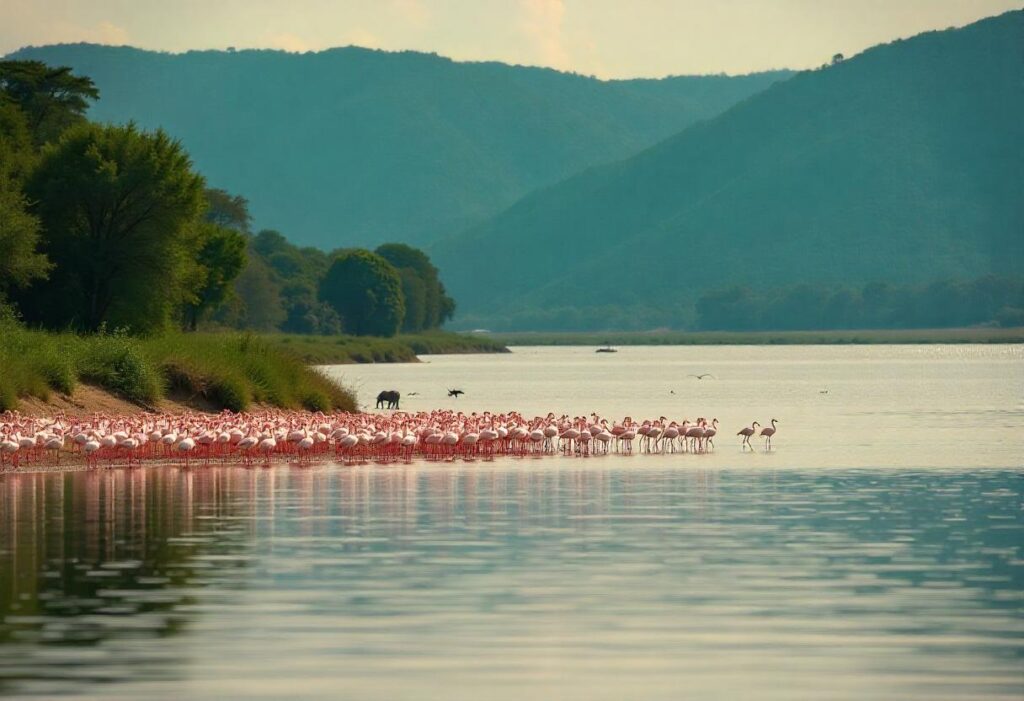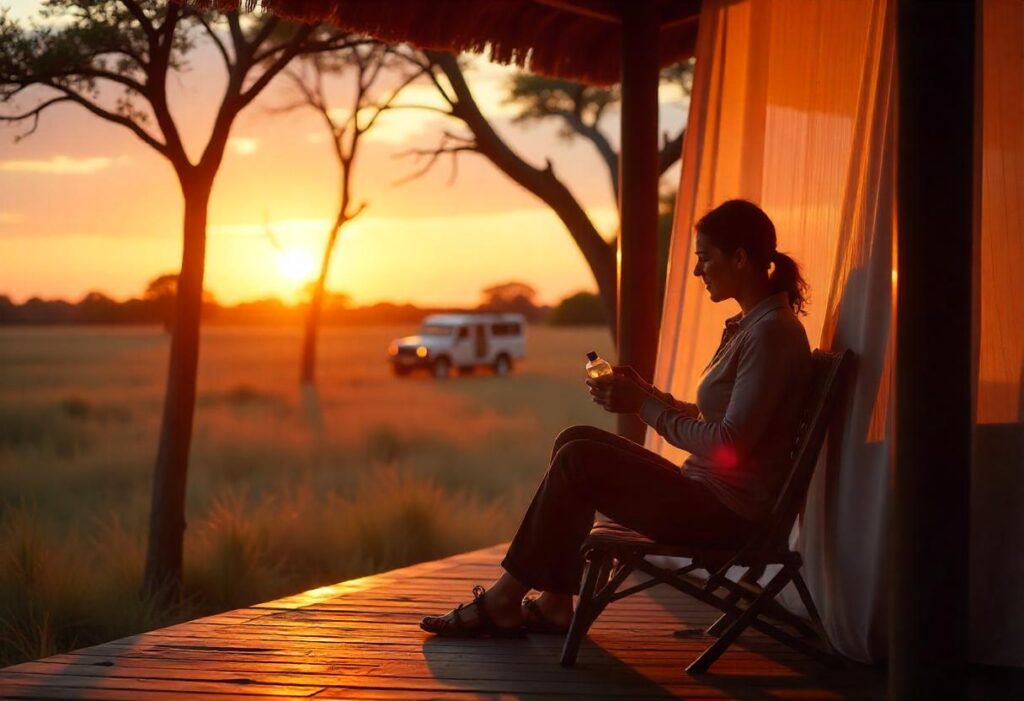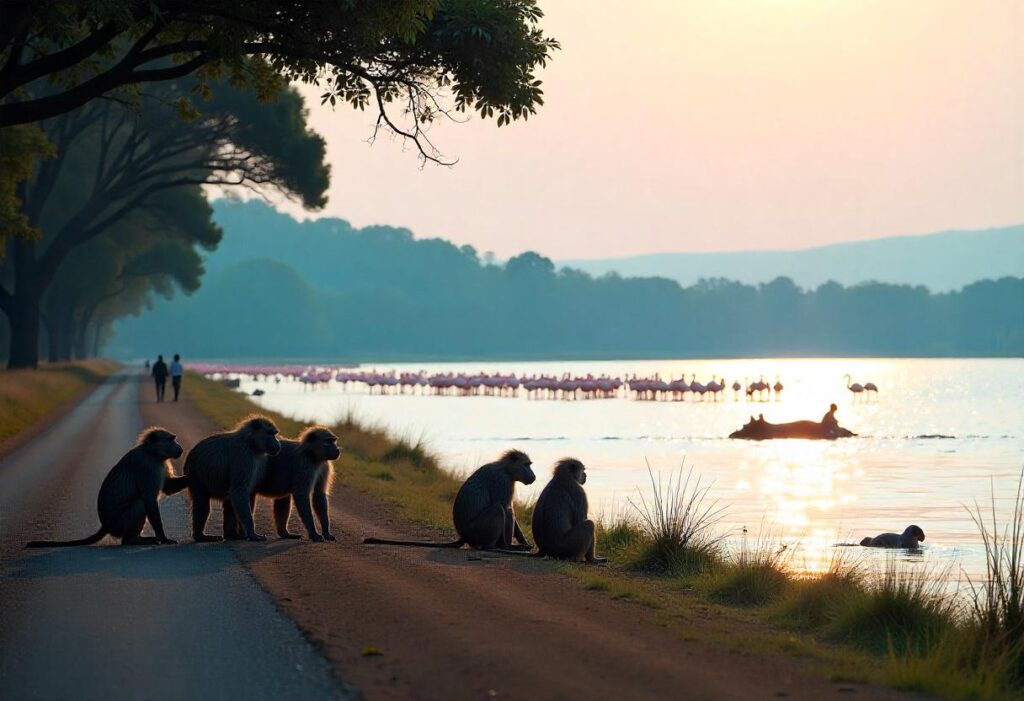Lake Manyara National Park often flies under the radar compared to Tanzania’s more iconic safari destinations, but that doesn’t mean it should be overlooked. If you’re wondering whether this compact park is worth adding to your itinerary, this guide will walk you through the highlights, drawbacks, and how to make the most of your visit.
The pros: Why Lake Manyara might surprise you
Dramatic scenery in a compact park
Lake Manyara is one of Tanzania’s most visually striking parks. The combination of lake, forest, and escarpment makes it feel lush and diverse—especially for such a small area. It’s an ideal setting for photographers and travelers who enjoy varied landscapes without long travel times.
Tree-climbing lions and rich birdlife
One of Manyara’s signature attractions is its tree-climbing lions, a rare behavior seen in only a few places in Africa. The park is also a haven for birdwatchers, home to over 400 species, including large flocks of flamingos along the lake’s edge during wetter months.
Ideal for a first or last-day safari
Thanks to its proximity to Arusha (about a 2-hour drive), Lake Manyara works well as a gentle introduction to Tanzania’s Northern Circuit or as a scenic wrap-up before heading home.
The cons: Limitations to consider
Wildlife density and visibility vary
While you might spot elephants, giraffes, and hippos, the density of wildlife in Manyara isn’t as high or consistent as in nearby Serengeti or Ngorongoro. Game viewing here can be hit or miss depending on the season and time of day.
Short visit duration
Because of its small size, many travelers report that half a day is enough to explore the park. This can be a plus for time-limited trips, but if you’re expecting an all-day safari adventure, it may leave you wanting more.
Best time to visit Lake Manyara
Dry season (June to October)
The dry season offers the best wildlife viewing, as animals are easier to spot when vegetation is thinner and they gather near the lake and water sources. The roads are also in better condition.
Wet season (November to May)
The wet season brings lush scenery and ideal conditions for birdwatching. Flamingos are especially abundant after the rains. However, some areas may become muddy, and wildlife can be more dispersed.
Lake Manyara vs. Tarangire: Which should you choose?
If you’re choosing between the two, here’s a quick breakdown:
- Lake Manyara: Smaller, more forested, famous for tree-climbing lions and flamingos. Better suited for birdwatchers and landscape lovers.
- Tarangire: Larger, more open, with higher elephant density and iconic baobab trees. Better for traditional big-game viewing.
👉 Many travelers opt to visit both—Lake Manyara as a half-day stop on the way to Serengeti or Ngorongoro, and Tarangire for a full-day immersion in the bush.
Final verdict: Is Lake Manyara worth visiting?
Yes, if you know what to expect. Lake Manyara is not a “big five” powerhouse like Serengeti or Ngorongoro, but it offers a scenic, relaxing, and accessible safari experience—especially ideal for photographers, bird lovers, and those short on time. It shines as a complementary stop rather than a standalone highlight.
FAQs about Lake Manyara
You may spot elephants and buffalo, but sightings of lions are rare and leopards extremely uncommon. Rhinos are not present in the park.
Most visitors spend a half day to one full day exploring the park. It’s compact and easy to combine with other nearby destinations.
Yes, it’s a great option for families thanks to its shorter drive times, lower visitor numbers, and calmer atmosphere.
It’s less expansive and intense but offers unique scenery and birds. Many travelers visit Lake Manyara first before continuing to the larger parks.






